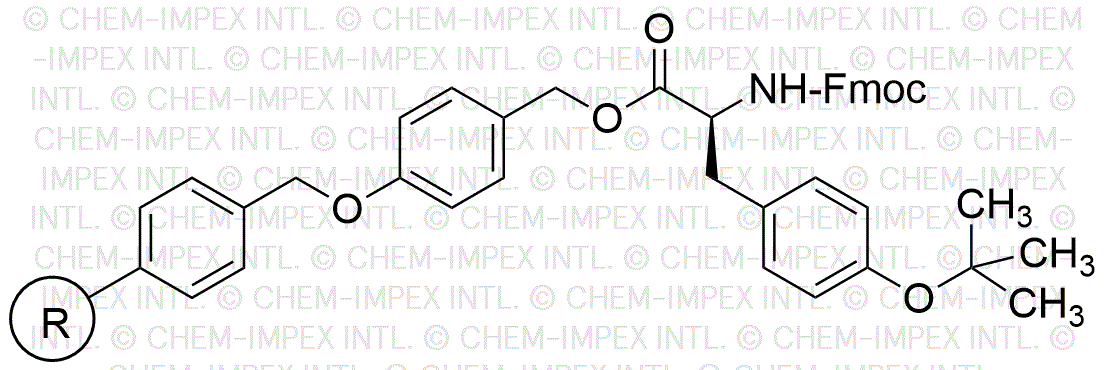Fmoc-O-tert-butyl-L-tyrosine 4-alkoxybenzyl alcohol is widely utilized in research focused on:
- Peptide Synthesis: This compound serves as a key building block in the synthesis of peptides, particularly in solid-phase peptide synthesis, allowing for the creation of complex and functional peptide sequences.
- Drug Development: It is employed in the development of pharmaceutical compounds, especially those targeting specific receptors, enhancing the efficacy and selectivity of drug candidates.
- Bioconjugation: The chemical is used in bioconjugation techniques, facilitating the attachment of biomolecules to drugs or imaging agents, which is crucial for targeted therapy and diagnostics.
- Research in Neuroscience: Its derivatives are explored in neuroscience research for studying neurotransmitter pathways and developing neuroprotective agents.
- Cosmetic Formulations: The compound finds applications in cosmetic chemistry, particularly in formulations aimed at skin rejuvenation and anti-aging, due to its potential beneficial effects on skin cells.
General Information
Properties
Safety and Regulations
Applications
Fmoc-O-tert-butyl-L-tyrosine 4-alkoxybenzyl alcohol is widely utilized in research focused on:
- Peptide Synthesis: This compound serves as a key building block in the synthesis of peptides, particularly in solid-phase peptide synthesis, allowing for the creation of complex and functional peptide sequences.
- Drug Development: It is employed in the development of pharmaceutical compounds, especially those targeting specific receptors, enhancing the efficacy and selectivity of drug candidates.
- Bioconjugation: The chemical is used in bioconjugation techniques, facilitating the attachment of biomolecules to drugs or imaging agents, which is crucial for targeted therapy and diagnostics.
- Research in Neuroscience: Its derivatives are explored in neuroscience research for studying neurotransmitter pathways and developing neuroprotective agents.
- Cosmetic Formulations: The compound finds applications in cosmetic chemistry, particularly in formulations aimed at skin rejuvenation and anti-aging, due to its potential beneficial effects on skin cells.
Documents
Safety Data Sheets (SDS)
The SDS provides comprehensive safety information on handling, storage, and disposal of the product.
Product Specification (PS)
The PS provides a comprehensive breakdown of the product’s properties, including chemical composition, physical state, purity, and storage requirements. It also details acceptable quality ranges and the product's intended applications.
Certificates of Analysis (COA)
Search for Certificates of Analysis (COA) by entering the products Lot Number. Lot and Batch Numbers can be found on a product’s label following the words ‘Lot’ or ‘Batch’.
Número de catálogo
Número de lote/lote
Certificates Of Origin (COO)
This COO confirms the country where the product was manufactured, and also details the materials and components used in it and whether it is derived from natural, synthetic, or other specific sources. This certificate may be required for customs, trade, and regulatory compliance.
Número de catálogo
Número de lote/lote
Safety Data Sheets (SDS)
The SDS provides comprehensive safety information on handling, storage, and disposal of the product.
DownloadProduct Specification (PS)
The PS provides a comprehensive breakdown of the product’s properties, including chemical composition, physical state, purity, and storage requirements. It also details acceptable quality ranges and the product's intended applications.
DownloadCertificates of Analysis (COA)
Search for Certificates of Analysis (COA) by entering the products Lot Number. Lot and Batch Numbers can be found on a product’s label following the words ‘Lot’ or ‘Batch’.
Número de catálogo
Número de lote/lote
Certificates Of Origin (COO)
This COO confirms the country where the product was manufactured, and also details the materials and components used in it and whether it is derived from natural, synthetic, or other specific sources. This certificate may be required for customs, trade, and regulatory compliance.

